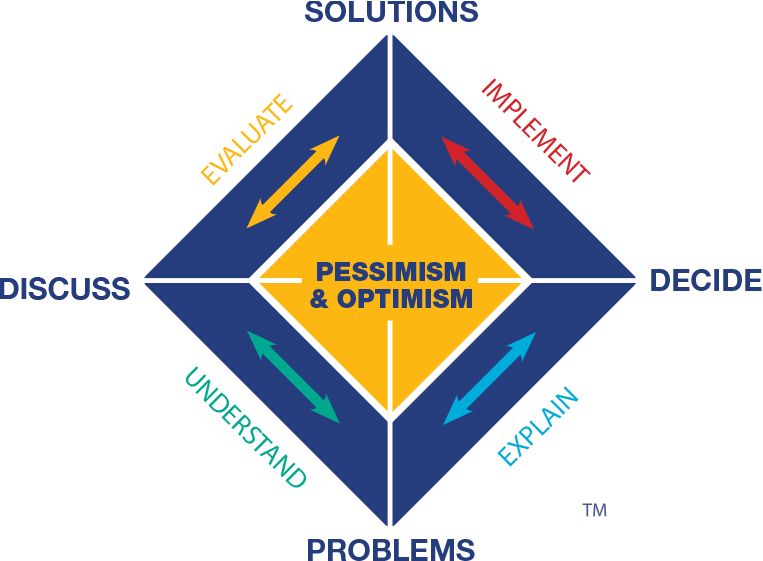Pessimism and Optimism
-
-

Two of the most important factors in problem solving are difficult to touch, or measure. They are the attitudes that people have to problems or opportunities. If someone is pessimistic, this can have a major impact on their contribution and can impact on the views and energy of others. Likewise, if a key person is optimistic, it can lift the spirits of others and can encourage them to achieve more than they thought was possible. It is not that pessimism is wrong and optimism is right. It is important to use both at the right time. For example, it is right to be pessimistic if people are going against the evidence and experience without any new information, and if the risks are assessed as too high. Equally, it is dangerous to allow a culture of pessimism to develop, as that in itself can breed defeatism.
-
Thomas Edison

Pessimism and optimism are central to success in your career and life. Thomas Edison was optimistic in his belief that he would find the filament for a light bulb. He continued in his pursuit, despite the fact that hundreds of his experiments were not successful. He took the view that with each experiment, he learnt something new. Some people see the proverbial glass as half full, while others view it as half empty.
Success is often a result of people being optimistic and carrying on with a project, rather than giving up because of pessimism. The dangers lie in being too optimistic, or too pessimistic. The way to establish balance is by asking the right questions and searching for answers. In this audio, you can hear how he applied this to his life by discovering his own talents and making the most of his aptitudes, despite little formal education.
-
Applications
Optimism is good when it leads to the self-fulfilling prophecy where people convince themselves they can succeed, and exceptional effort follows. However, it is a good rule to ask those who are optimistic to indicate what evidence they have for their views. Likewise, you can ask those who are pessimistic, to state under what circumstances they will go ahead. For example, when trying to gain funds from a bank, expect them to be critical and probably more pessimistic than you are, about success. Ask them to provide their criteria and see if you can meet it. Also, what parts of the problem solving process are people pessimistic and optimistic about? Is it at the problem identification stage, or the solution development stage, or both?
It is useful to be specific and assess where the pessimism and optimism is at every stage, inclusive of:
-
information arising from enquiries
-
explanations arising from diagnosis.
-
evaluations related to proposals.
-
implementation related to coordination.
Optimism and pessimism are closely associated with confidence. Indeed, where confidence is high, people often perform better, as seen in many sporting events. The same is true at work. It is important to encourage people by word and deed, and enable them to convert their optimism into success.
-
-